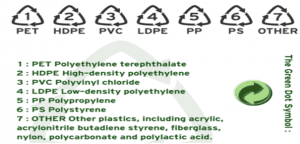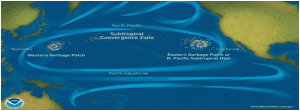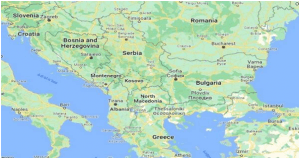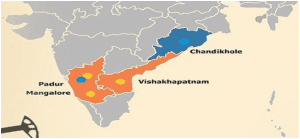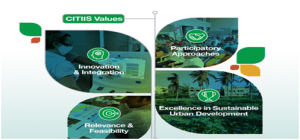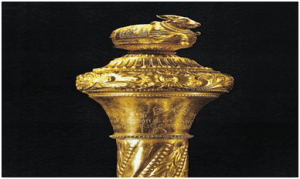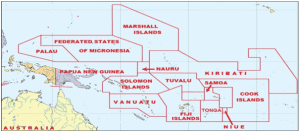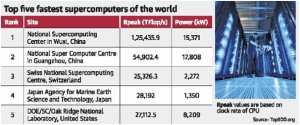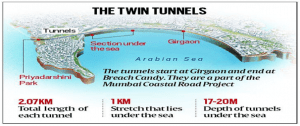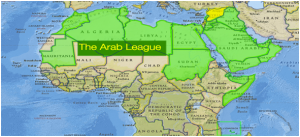TOP 5 TAKKAR NEWS OF THE DAY (15th JUNE 2023)
1. POCSO ACT
TAG: PRELIMS PERSPECTIVE
THE CONTEXT: Kerala High Court recently quashed a case filed under the POCSO Act, India’s child protection law, against a woman accused of subjecting her children to an obscene act.
EXPLANATION:
- The Protection of Children from Sexual Offences Act, 2012 [“POCSO Act, 2012”] is legislation which aims at protecting children from all types of sexual abuse.
- Although the Convention on the Rights of the Child was adopted by the United Nations in 1989, the offences against children were not redressed by way of any legislation in India till the year 2012.
- It provides stringent deterrents for the commission of offences against children ranging from a minimum of 20 years of imprisonment to the death penalty in case of aggravated penetrative sexual assault.
- Before the introduction of the POCSO Act, 2012, the sole legislation in India that aimed at protecting the rights of a child was the Goa’s Children’s Act, 2003 and Rules, 2004.
- Under the Indian Penal Code, 1860, child sexual abuse accounted for an offence under Sections 375, 354 and 377.
- In India, POCSO Act, 2012 is not the only legislation which deals with child sexual abuse cases. The POCSO Act cannot be called a complete code in itself and provisions of the Code of Criminal Procedure, 1973, Indian Penal Code, 1860, Juvenile Justice Act, and Information Technology Act, 2000 overlap and encapsulate the procedure and specify the offences.
- The Act enunciates the punishment where the offences have been committed against a child. Section 2(1)(d) of the POCSO Act contains the definition of child. It states that, “ a child means any person below the age of eighteen year”. This implies that offences perpetrated against anyone of the age less than eighteen years are punishable under the POCSO Act.
Some of the salient features of the POCSO Act are discussed as follows:
- Confidentiality of the victim’s identity: Section 23 of the POCSO Act provides for the procedure of media and imposes the duty to maintain the child victim’s identity unless the Special Court has allowed the disclosure.
- Gender-neutral provisions: Another glaring feature of the POCSO Act is that it does not create any distinction between the victim or the perpetrators on the basis of their gender. The definition of child includes anyone below 18 years of age and in several cases, the courts have even convicted women for engaging in child sexual abuse incidents.
- Mandatory reporting of child abuse cases: Sexual abuse cases happen behind closed doors and the elders attempt to hide these incidents due to the stigma that is attached to these crimes. Consequently, for the proper implementation of the POCSO Act, reporting of these incidents by the third parties who have the knowledge or apprehension of such offences, has been made mandatory under Sections 19 to 22 of the POCSO Act.
Issue:
- Kerala High Court this week quashed a case filed under the POCSO Act, India’s child protection law, against a woman accused of subjecting her children to an obscene act.
- The mere sight of a woman’s naked upper body should not be deemed sexual by default — and it should be considered in the context in which it was published, the court observed on June 5.
- She was accused of subjecting her children to an obscene act. Police registered a case, and in a final report filed at the Additional Sessions Court, Ernakulam, charged her with offences under Sections 10 read with Section 9 (n), Section 14 read with Section 13 (b), and Section 15 of the Protection of Children from Sexual Offences (POCSO) Act, 2012.
- The police also charged the activist under Section 67B (a), (b), and (c) of the Information Technology (IT) Act, 2000, and Section 75 of the Juvenile Justice (JJ) Act, 2015.
- Section 67B (a) (b) and (c) of the IT Act lays down the punishment for publishing or electronically transmitting obscene material, which depicts children in sexually explicit acts. Section 67B (a) is attracted when the material depicts children engaged in sexually explicit acts, and Section 67(B) (b) is attracted when children are depicted in an obscene, indecent, or sexually explicit manner.
- Section 67B (c) is about the cultivation, enticement, or induction of children into online relationships for sexually explicit acts.
- Section 75 of the JJ Act prescribes punishment for cruelty to children, which includes assaulting, abandoning, abusing, exposing, and wilfully neglecting them to cause unnecessary mental or physical suffering.
What the court said
- Dismissing the POCSO charges against her, the court said that Sections 9 (n) and 10 are attracted when a child’s relative commits “sexual assault”. However, “sexual assault” under Section 7 of the Act requires “sexual intent” while touching the child’s private parts or making the child touch one’s own or another person’s private parts.
- On the use of Section 15 (punishment for storing pornographic material involving children), the court said the children in the video were clothed, and participating in a harmless and creative activity. “Hence, the offence under Section 15 also would not lie,” the court said.
- In ‘K.S. Puttaswamy v Union of India’ (2017), a nine-judge Bench of the Supreme Court unanimously recognized the right to privacy as a fundamental right under Article 21 of the Constitution, and declared bodily autonomy to be an integral part of it, the court said.
- Clearing the accused of charges under Sections 67B (a), (b), and (c) of the IT Act, the court said that Section 67B (b) is attracted only when the material “depicts children in an obscene or indecent, or sexually explicit manner”.
2. SAHKAR SE SAMRIDHI
TAG: PRELIMS PERSPECTIVE
THE CONTEXT: In the direction of realizing the Prime Minister’s vision of “Sahkar Se Samridhi”, the Government of India has taken five more important decisions. These decisions were taken in a meeting of Union Home Minister and Minister of Cooperation with Minister of Chemicals and Fertilizers in New Delhi.
EXPLANATION:
- These important decisions will increase the income of Primary Agricultural Credit Societies, as well as increase the employment opportunities in rural areas and farmers will be able to get fertilizers, pesticides, seeds and agricultural machinery at the local level.
The following 5 important decisions were taken in the meeting-
- There are about 1 lakh Primary Agricultural Credit Cooperative Societies present across the country. On the basis of mapping, Primary Agricultural Credit Societies (PACS) which are not functioning as fertilizer retailers will be identified and they will be encouraged to function as retailers on the basis of feasibility in a phased manner.
- PACS which are not currently functioning as Pradhan Mantri Kisan Samridhi Kendras (PMKSK) will be brought under the ambit of PMKSK.
- PACS will be connected with the marketing of organic fertilizers, especially Fermented Organic Manure (FoM) / Liquid Fermented Organic Manure (LFOM) / Phosphate Enriched Organic Manure (PROM).
- Under the Market Development Assistance (MDA) scheme of Department of Fertilizers, fertilizer companies will act as an aggregator for small bio-organic producers to market the end product, in this supply and marketing chain of bio-organic fertilizers PACS will also be included as wholesalers/retailers.
- PACS can also be employed as Drone entrepreneurs for spraying fertilizers and pesticides. Drones can also be used for survey of property.
Sahkar Se Samriddhi:
- Government aims to achieve overall prosperity in the country through the mantra of “Sahkar Se Samriddhi”.
- It is being proposed to strengthen cooperatives by bringing transparency, modernization, and creating competitiveness.
- In order to achieve this, Government is formulating a new National Cooperation Policy, for which it has started consultations with various stakeholders including various Ministries/Departments of Central Governments, State Governments, Cooperative Federations, NABARD and other major cooperative institutions of the country.
- Already, response has been received from about 35 stakeholders, including 10 Ministries and 6 State Governments.
Governance of the Cooperative Societies
- The history of cooperative society can be tied back to 1904, when first law for Cooperative Society was enacted for governance and administration of the formation of the cooperative societies in India. This was superseded by Cooperative Societies Act, 1912. Thereafter, various cooperative committees were formed for better governance considering the nature and objective of the cooperative societies being formed.
- The Multi-Unit Cooperative Societies Act, 1942 was enacted to govern the Cooperative Societies established in more than one state. It was superseded by The Muti-State Cooperative Societies Act, 1984 which was again modified in 2002.
- The Act encouraged formation of various multi-state cooperative societies which has been aid for the low-income groups all over India for raising credits at lower interest rates, paving way to the larger market with minimal cost and other administrative support.
- In 2021, the Government has formed a vision “Sahakar se Samriddhi” (prosperity through cooperation) and taken several steps to strengthen India’s cooperative architecture. The Union Ministry of Cooperation was formed to realise the vision, streamline process for ease of doing business for a cooperative society, provide a separate administrative and legal framework to the cooperative businesses.
- In 2022, the Government has planned to formulate a new National Cooperation Policy for bringing transparency, modernization, and competitiveness in India’s cooperative businesses.
- In budget speech on 1st February 2023, the Hon’ble Finance Minister (“FM”) has stated the inclusive growth as one of the Saptarishi for this Amrit Kaal Budget. Co-operative societies are one of the important pillars for an inclusive growth of India
3. ATLANTIC DECLARATION
TAG: GS 2: INTERNATIONAL RELATIONS
THE CONTEXT: US President and British Prime Minister agreed to deepen close economic ties between their countries, pledging to accelerate the clean energy transition and strengthen critical mineral supply chains.
EXPLANATION:
- It is first-of-its-kind economic partnership that mapped out future cooperation on issues such as artificial intelligence, and other economic and commercial relations.
- It is a framework for a 21st Century U.S.-UK Economic Partnership to ensure that our unique alliance is adapted, reinforced, and reimagined for the challenges of this moment.
- Since Atlantic Charter in 1941, both countries have worked together to shape an open and rules-based international order based on our enduring support for shared values.
- An international economic architecture has been designed that has underpinned by the closest cooperation on defense and security, a thriving economic relationship, leadership in science and technology, and deep ties between our people and civil societies.
- Over the past year, we have taken steps to deepen our unrivalled defense, security, and intelligence relationship across every theater in the globe in which we cooperate, recognizing the indivisibility of security in the Euro-Atlantic and the Indo-Pacific and other regions.
- The United States and the United Kingdom resolve to partner to build resilient, diversified, and secure supply chains and reduce strategic dependencies.
- We remain committed to continuing to lead in the technologies of the future and advance the closest possible coordination on our economic security and technology protection toolkits to ensure that emerging technologies work for, not against, our democracies and security.
- And as democratic and open societies we resolve to work together to ensure the safety, prosperity, and security of our nations and peoples while driving growth in living standards across the world.
- The Atlantic Declaration and accompanying Action Plan form the basis of a new type of innovative partnership across the full spectrum of our economic, technological, commercial and trade relations; a first of its kind, and which demands our joint leadership and imagination to realize in full.
- It will constitute a new economic security framework covering ever-closer cooperation on critical and emerging technologies and stronger protective toolkits.
- It will support the United States and the United Kingdom in our efforts to harness the energy transition and technological breakthroughs to drive broadly shared growth, create good jobs, and leave no community behind. It will explore ways to deepen our trade and investment relationship. And it will strengthen our alliance across defense, science, health security, and space allowing us to explore increased cooperation in other areas for mutual economic benefit.
Atlantic Declaration Action Plan (ADAPT)
Together the United States and the United Kingdom can lead in building a new form of economic partnership that advances economic growth and competitiveness, that builds capacity, resilience, and inclusiveness, and works for our workers and communities; works for our businesses; works for our climate; and works for our national security. As the first steps in this new partnership, we are today announcing and taking concrete and coordinated actions to deepen this partnership across five pillars, by:
- ensuring U.S.-UK leadership in critical and emerging technologies,
- advancing ever-closer cooperation on our economic security and technology protection toolkits and supply chains,
- partnering on an inclusive and responsible digital transformation,
- building the clean energy economy of the future
- further strengthening our alliance across defense, health security, and space.
Atlantic Declaration Action Plan (ADAPT) to develop and drive forward concrete progress across the Atlantic Declaration Action Plan and ensure increasing ambition over the next months and years.
4. MISSION ON ADVANCED AND HIGH-IMPACT RESEARCH (MAHIR)
TAG: PRELIMS PERSPECTIVE
THE CONTEXT: The government has launched a ‘Mission on Advanced and High-Impact Research (MAHIR)’ with a view to leverage emerging technologies in the power sector and make the country a manufacturing hub.
EXPLANATION:
- The Ministry of Power and the Ministry of New and Renewable Energy have jointly launched a National Mission to quickly identify emerging technologies in the power sector and develop them indigenously, at scale, for deployment within and outside India.
- The National Mission, titled “Mission on Advanced and High-Impact Research (MAHIR)” aims to facilitate indigenous research, development and demonstration of the latest and emerging technologies in the power sector.
- By identifying emerging technologies and taking them to the implementation stage, the Mission seeks to leverage them as the main fuel for future economic growth and thus make India a manufacturing hub of the world.
- The Mission will be funded by pooling financial resources of the Ministry of Power, Ministry of New and Renewable Energy and the Central Public Sector Enterprises under the two Ministries. Any additional funding needed will be mobilized from Government of India’s budgetary resources.
- Planned for an initial period of five years from 2023-24 to 2027-28, the Mission will follow the technology life cycle approach of Idea to Product.
- Mission will serve as a catalyst for national priorities such as achieving Net Zero emissions and promoting initiatives like Make in India and Start-up India. It will also contribute towards achieving the United Nation’s Sustainable Development Goals (SDGs).
- MAHIR will work towards Industry-Academia -Government collaboration to create an ecosystem for innovation and translation of research in the power sector.
Mission Objectives
The key objectives of the Mission are as follows:
- To identify emerging technologies and areas of future relevance for the Global Power Sector and take up indigenous end-to-end development of relevant technologies
- To provide a common platform for Power Sector Stakeholders for collective brainstorming, synergetic technology development and devise pathways for smooth transfer of technology
- To support pilot projects of indigenous technologies (developed especially by Indian Start-ups) and facilitate their commercialization
- To leverage foreign alliances and partnerships to accelerate research & development of advanced technologies and to build competencies, capabilities and access to advanced technologies through bilateral or multilateral collaborations, thereby facilitating exchange of knowhow and Technology Transfer.
- To seed, nurture and scale up scientific and industrial R&D and to create vibrant & innovative ecosystem in the Power Sector of the country
- To make our Nation among the leading Countries in Power System related Technologies & Applications development
Areas Identified for Research
To begin with, the following eight areas are identified for research:
- Alternatives to Lithium-Ion storage batteries
- Modifying electric cookers / pans to suit Indian cooking methods
- Green hydrogen for mobility (High Efficiency Fuel Cell)
- Carbon capture
- Geo-thermal energy
- Solid state refrigeration.
- Nano technology for EV battery
- Indigenous CRGO technology
Structure of the Mission
- The Mission will have a two-tier structure – a Technical Scoping Committee and an Apex Committee.
Technical Scoping Committee
- The Technical Scoping Committee, chaired by the Chairperson of Central Electricity Authority, will identify ongoing and emerging research areas globally, recommend potential technologies for development under the Mission, justify the techno-economic advantages, provide research outlines, and conduct periodic monitoring of approved research projects.
- The Technical Scoping Committee (TSC) will survey and identify the on-going and emerging areas of research globally and will make recommendations to the Apex Committee.
Apex Committee
- The Apex Committee, chaired by the Union Minister for Power & New and Renewable Energy will deliberate on the technology and products to be developed and approve the research proposals. The Apex committee will look also into international collaborations.
- The Apex Committee will approve the research proposals and monitor the progress of research. The technology / product to be developed under the Mission will be deliberated by the Apex Committee.
Scope of the Mission
- Under the Mission, once research areas are identified and approved by the Apex Committee, the proposals for outcome-linked funding will be invited from companies / organizations across the globe.
- The selection of the proposal shall be done through Quality cum Cost-Based Selection (QCBS) basis. The organizations of the Ministries may also co-develop the technologies with the selected Research Agency. The IPR of the technology developed would be shared by the Government of India and the Research Agency.
- The Mission shall also fund pilot projects of technologies developed by Indian Start-ups and facilitate their commercialization through the Central Public Sector Enterprises under both the Ministries.
- The start-ups will have to share the IPR with the Government of India / Central Power Research Institute.
- The Mission will also facilitate international collaboration for smooth exchange of know-how and Technology Transfer. The Mission will also seek collaboration with the best laboratories of the world for joint development of technologies.
5. WILDFIRES IN CANADA
TAG: GS 3: ENVIRONMENT
THE CONTEXT: According to the Canadian Interagency Forest Fire Centre, there are 426 active fires in the country till mid-2023.
EXPLANATION:
- New York City’s air quality is currently ranked among the worst in the world due to drifting smoke rising from wildfires in Canada.
- Areas from the mid-Atlantic through the Northeast and upper parts of the Great Lakes registered air quality in unhealthy or worse categories.
What is causing the wildfires in Canada?
- Quebec is Canada’s largest province by area, and also home to most currently active wildfires. Most of these have been caused by lightning.
- Human activities are also to be blamed for adding to the forest fires.
- According to a study published in Nature journal, lightning is the main precursor of natural wildfires. Laboratory experiments and field observations have indicated that continuing electrical currents in lightning flowing for more than some tens of milliseconds (so-called Long-Continuing-Currents, or LCC) are likely to produce fires.
- According to the study, simulations suggest an increase in total global lightning and global LCC by the 2090s.
- The simulated globally averaged surface temperature increases by about 4 Kelvin (since Kelvin and Celsius have a linear relationship, this equals to an increase by about 4 degrees Celsius), and thus we obtain an increase in total lightning activity of 11% per Kelvin.
How does lightning work?
- During a storm, water droplets from warmer air and ice crystals from cooler air come together to form thunderstorm clouds. Contact between these water droplets and ice crystals produces a static electrical charge in clouds.
- When opposing negative and positive charges in clouds build up, the insulating capacity of air between the charges as well as between the cloud and the ground breaks down, leading to a rapid discharge. This is what we call lightning.
- It can occur between opposite charges within the thunderstorm cloud, or between opposite charges in the cloud and on the ground.
Is lightning an indicator of climate change?
- The World Meteorological Organisation recognises lightning as an essential climate variable that critically contributes to the characterisation of the earth’s climate.
- As global warming increases the earth’s surface temperature, lightning activity is also predicted to increase.
- According to American Geophysical Union’s magazine Eos, lightning also produces nitrogen oxides. These react with other gases in the atmosphere and produce ozone, which is a strong greenhouse gas that traps earth’s outgoing heat and retains it in the atmosphere, altering climate and weather patterns.
What are the other reasons behind uncontrolled wildfires in Canada?
- According to Reuters, Atlantic Canada received low snowfall this winter, followed by an unusually dry spring. The weather of Nova Scotia province, where wildfires are not unusual but fewer than in other provinces, is influenced by the North Atlantic Ocean.
- Due to its proximity to the ocean, the region ordinarily has higher humidity and more moderate temperatures as compared to many other parts of the country.

